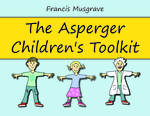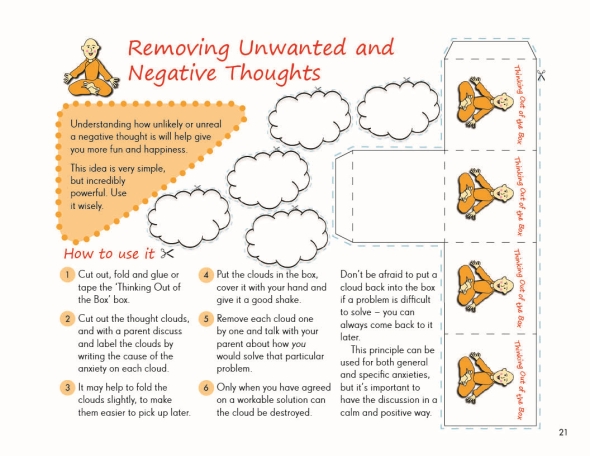 Francis Musgrave is the founder and trustee of AS Active, a non-profit community project set up and run by and for families of children with Asperger Syndrome (AS). AS Active aims to provide children with AS with a network of peers to play, learn and connect with, and to provide their parents or carers with some valuable time to themselves. The activities in the new book, The Asperger Children’s Toolkit, were developed at AS Active, with the input of clinical professionals.
Francis Musgrave is the founder and trustee of AS Active, a non-profit community project set up and run by and for families of children with Asperger Syndrome (AS). AS Active aims to provide children with AS with a network of peers to play, learn and connect with, and to provide their parents or carers with some valuable time to themselves. The activities in the new book, The Asperger Children’s Toolkit, were developed at AS Active, with the input of clinical professionals.
Here, Francis explains how AS Active was founded and talks about how the activities in his new toolkit can help children on the Autism Spectrum handle setbacks and celebrate successes – see below for a free downloadable activity!
Can you tell us a little about your background and how you came to found AS Active?
I’m a dad and came to set up AS active with a group of parents who were having problems getting their kids to go along to any kind of event, let alone an AS friendly one. We found a suitable secure venue, and then worked to train ourselves and others to become play leaders. We were fortunate to get help from our local authority, which sent along an experienced play leader and an Autism expert. We also got local mental health and medical professionals involved. Everyone was very enthusiastic and our first event was small but a real learning experience. It taught us that we should learn how to deal better with the unexpected, and that even guided play needs to have some fluidity, to be fun and enjoyable. One parent said to me: “We love coming here because we don’t have to explain anything, you guys just understand.”
Overcoming anxiety and getting to any event is the first hurdle to overcome, so we make it very easy for kids to enter on their own terms. A play leader will join parents and child in a light-hearted game, and slowly introduce them to other children. We then move on to group and socially interactive games. We reward positive signs of social interaction and caring with verbal praise and stickers, and guide alternative behaviours using individually focus distractions and gradually re-introduce children back into the group.
Kids with High Functioning Autism (HFA) and Aspergers, are very self-aware, and crave social interaction. We work with them to facilitate this, not only to make socialising a rewarding experience but to help them see and remember how it is achieved. It requires constant and persistent reinforcement, but it really pays off.
Can you describe how the idea for this book came about?
Parents often find this work difficult to do at home; it’s both very time consuming and tiring, particularly if you have other kids. The book was driven by the need for a resource that parents could work with at home. It’s very focused and interactive and, most of all, fun so it becomes absorbing. We’ve found ourselves, and in speaking to other parents and educators, that fun really breaks down learning walls and the barriers to social interaction.
Interestingly, we never actually set out to write a book. What is now the The Aspergers Children’s Toolkit actually started life as a self-education exercise for my wife and myself. We learned quickly from other parents, that parental education was pretty thin on the ground, and largely self-funded. It was clear speaking to parents and mental health professionals that whilst there were no shortage of books on AS and Autism, very few were aimed at children, and fewer still were giving them the basic skills they needed, not just to survive but to thrive.

Download a free activity from the book!
So we set out to change this, but to do it from a child’s perspective and in a way that allows both parent/carer and child to learn together. We are aware that most kids need to learn life skills, but for HFA and AS kids the most important one is to understand their condition and to learn to shrink its impact on them. It takes a lot of courage to learn social interaction, and this doesn’t happen overnight; it’s complex. So seeing issues from the child’s perspective for us was the only way to truly get our messages across.
What is unique about the book’s approach?
Like AS Active itself, the primary objective of the book is to be fun. Through fun, we break down the barriers to learning and teach fundamental skills in a meaningful way that most AS kids can relate to. The book is written in sections that they can come back to it over and over again in order to reinforce what they have learned. It’s deliberately very colourful and visually orientated to aid processing and assimilation.
One particular example of where it really helps is in teaching breathing techniques and meditation, even for short periods, which really helps control emotions and anxiety (one mother even told us she uses these techniques herself). I think the environmental Occupational Therapy issues are often overlooked, and many people have commented that this was a real eye opener for them.
Why did you feel it was important to include safety in the digital world as a particular topic?
We live in a fast moving world, where the use of technology leaves few people untouched; many kids reading this book will be using technology on a regular basis. Being part of a vulnerable group, our children need to be made aware of the dangers – but in a way that doesn’t frighten them. Information Technology is a wonderful resource; we simply want to maximise its enjoyment and usefulness by taking a few simple steps to prevent undesirable outcomes.
The most important steps to online safety are to keep your personal details safe and secure as possible, and not to express your emotions publicly. The internet is an exciting and fascinating place, but like any place you visit there are fundamental rules and protocols. The book covers these rules and guidelines, and encourages openness with parents and carers for those times when children are just not sure.
How do you hope children with Asperger Syndrome and their parents/carers will use the toolkit?
I hope they will use it interactively, as a team – that’s one of the key themes of the book: the family, carers and teachers are all in this together. Taking a collaborative approach is not only a vital social skill, it’s also how we get things done in the wider world. It’s often difficult for caregivers and parents to interact with the more troublesome aspects of HFA and AS. This book helps provide ideas for the many routes to resolution.
Someone once said: “There is no problem that cannot be solved, but often the solution need not be what we expect.” With guidance and patience, we can learn to help our children have rewarding and fulfilling experiences if we are prepared to learn and accept the differences in others. This we can only do if we work together.
Copyright © Jessica Kingsley Publishers 2012.